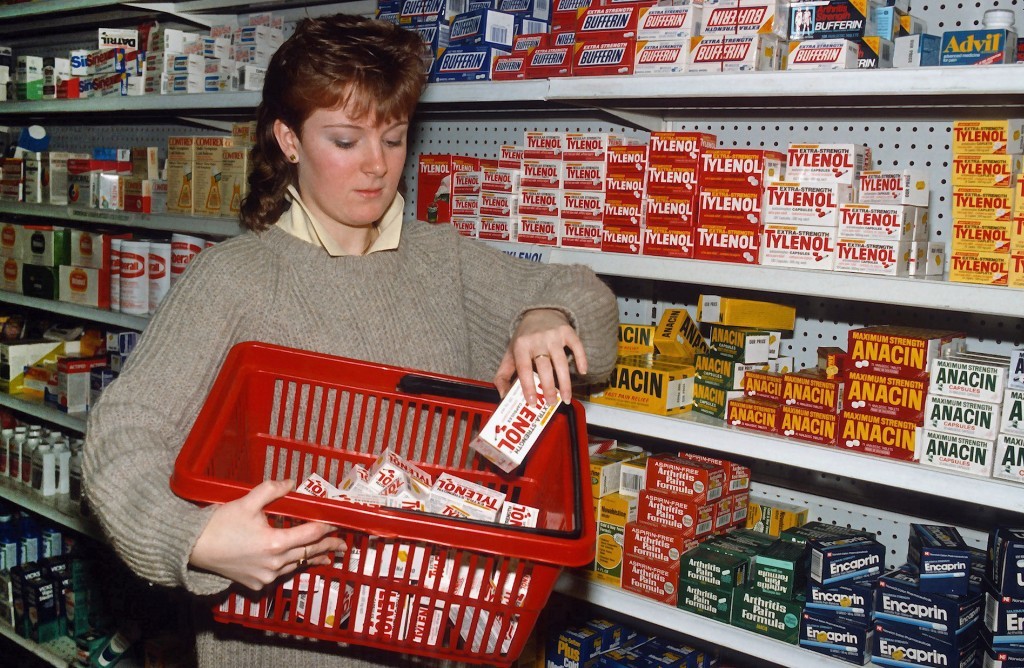One year ago at this time, a close family member of mine had been discharged from the Loyola Medical Center after what was almost six weeks of intensive care for burns. But he had not been treated for burns that were caused from being in close proximity to a hot flame. His body had developed a serious allergic reaction to a cocktail of over-the-counter medications, among which was acetominophen.
Acetominophen is a drug that treats inflammatory pain, like what you would use if you had a headache or stubbed your toe. Besides for pain treatment, one might also use it for reducing a fever. In the United States, it is marketed as Tylenol. In Europe, it’s very common to find it under its other generic name, paracetamol. As generic drugs have gained popularity in the the US, acetominophen, in its generic, non-Tylenol form, has found its way into our medicine cabinets. Two types of generic drugs exist: the type prescribed by your doctor and the type that you can buy off the shelves, yourself.
Last Friday, the Food and Drug Administration announced that it would officially require producers of prescription drugs that contain acetominophen to print warnings for Steven-Johnson Syndrome and Toxic Epidermal Necrolysis, or SJS and TENS, respectively, on their labels and stated that it would “work with” makers of non-prescription drugs to follow suit. These conditions are serious and sometimes fatal, requiring harrowing ICU stays as it was in the case of my relative.
Earlier this year, a New Hampshire woman, Karen Bartlett, sued the Mutual Pharmaceutical Company for creating a faulty generic prescription pain medication that caused her to develop TENS. Between March and June, the US Supreme Court had been deliberating the case, where, at the end of June, the judges ruled in a 5-4 decision that Mutual was not liable for damages. Because Mutual is required by federal law to copy the design of the original drug, patients cannot sue the generic drug company for a defective product. Mutual, according to all the evidence in the current case, had created a carbon-copy product.
Although what Bartlett took was not acetominophen, the court’s ruling has implications for damages that any generic drug causes to patients. It essentially means that generic drug companies can never be sued for adverse reactions to their products since they have no power to change the formula and labeling of the original product.
Perhaps Bartlett could sue again if there were proof that Mutual did not follow the original company’s formula, exactly. And maybe that base has been covered.
The FDA mandate will affect name-brand medication labels, which will directly impact generic medication labels of the same name.
Putting the risk on the label might deter some patients from taking the medicine, but every medication comes with risks, and we all continue to take them. Generic or not, prescription or not, the idea that you might not take a medication because it might result in internal bleeding may not be enough to trump the fact that it might bring down your life-threatening fever.
Although the patient and healthcare provider have to weight the risks and benefits of taking a drug, it is ultimately the onus of the drug maker to create a product that works without almost killing people. But how much of the time does a medicine trigger a near-fatal allergic reaction, as in Bartlett’s case? Is it enough for the manufacturer to reassess the drug’s composition? And will companies always get away without punishment if consumers do develop a reaction that is listed on their labels?
Bloomberg News reports that there were 91 cases of SJS and TENS between 1969 and 2012, in reports from the FDA’s Adverse Events Reporting System, or FAERS. However reports into this system come from civilians and health practitioners on a voluntary basis. It is entirely possible that these numbers could be higher. And, it wasn’t clear from the article whether these cases were the result of having used acetominophen or something else.
Looking on the FAERS site, data is only available through April 2012. There was an indication that the data from May to December 2012 would be available on their site, and maybe it was, in a different format. At any rate, the most available data is already a little old.
I’ve been using a Google alert to track SJS in the news since June 2012. Every other week or so, I get an email in my inbox telling me of a new case that has been caused by some sort of medication. I’m tempted to use Quartz’s open-source chart maker or something else on GitHub to map out the incidence and other data attributes to get an idea of how common this condition is.
Deciding whether to take a medicine or not always comes with risks. But when someone’s quality of life is completely uprooted as a directly result of having taken a medication, the law should really revise its idea of justice rather than protecting drug companies behind warning labels. And those companies should develop safer products.
